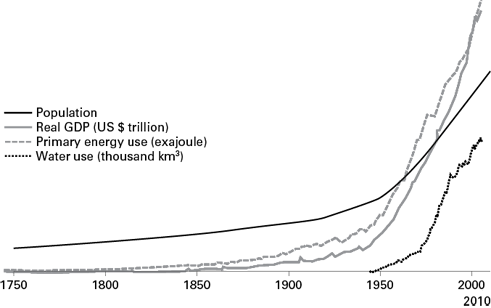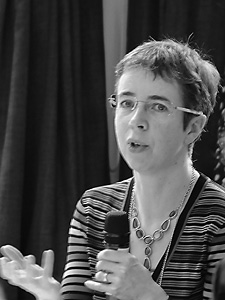 Catherine Weetman founded Re-think Solutions to help businesses develop future-proofed resilient strategies, assessing sustainability risks and value opportunities. She gained an MSc in Logistics and Transportation from Cranfield University, is a Visiting Fellow at the University of Huddersfield and Vice-Chair of the Environment and Sustainability Forum, Chartered Institute of Logistics and Transport. Her background includes industrial engineering in manufacturing and retail distribution, logistics solution design, project management, business intelligence and supply chain consultancy. Her career covers food, fashion and supply chains, including Tesco, Kelloggs and DHL Supply Chain.
Catherine Weetman founded Re-think Solutions to help businesses develop future-proofed resilient strategies, assessing sustainability risks and value opportunities. She gained an MSc in Logistics and Transportation from Cranfield University, is a Visiting Fellow at the University of Huddersfield and Vice-Chair of the Environment and Sustainability Forum, Chartered Institute of Logistics and Transport. Her background includes industrial engineering in manufacturing and retail distribution, logistics solution design, project management, business intelligence and supply chain consultancy. Her career covers food, fashion and supply chains, including Tesco, Kelloggs and DHL Supply Chain.
This journey began around 2010, when I became increasingly frustrated with the lack of action from governments, businesses and all of us to discuss the issues and develop real solutions to a series of sustainability challenges. Instead, I could see only random acts of green-ness, with people, politicians and the media all looking away from the issue. Along the way, a wide range of people have inspired, helped and offered support, and I would like to say thank you, especially to:
Those who provided inspiration along the journey, sparking optimism and hope, with a vision of an exciting, fulfilling, sustainable future; including everyone at the Ellen MacArthur Foundation, and especially to Ken Webster and Craig Johnson for their book Sense and Sustainability , which provided an aha moment about the circular economy in 2010. Derek Moore and the CILT Leaders in Supply Chain forum, and Derrick Potter of Potter Logistics, for their wise words in the early stages, and to Mark Parsons, Martin Neil and Deborah Capill of DHL for helping (in different ways) to support my thinking. Julie Starr, whose many incisive, inspiring and helpful observations kept me on the right track. Everyone at the Institute for Manufacturing at the University of Cambridge, including Ian Bamford, Dee Dee Frawley, Dr Geraldine Brennan, Fenna Blomsma, Professor Steve Evans, Dr Dai Morgan, Dr Doroteya Vladimirova and Miying Yang.
Thanks also to my contributors, including Jo Conlon, Dr Regina Frei and Barry Waddilove; to Dr Winifred Ijomah, Director, Scottish Institute for Remanufacture for helpful suggestions on remanufacturing; and those who reviewed the content and provided useful feedback, including Calum Lewis at Lego, Jo Conlon and the Kogan Page team. Thanks to Dr Andrew Jenkins and Professor Samir Dani at University of Huddersfield, Professor David Grant at University of Hull and Rachel Raymond for their top tips on writing textbooks, and to Gudrun Freese for her advice and topic suggestion.
Thank you to everyone who gave their time in Q&A and corrections for case studies and other content: Adam Fairweather of Re-worked and Innovations Director at Greencup coffee; Dr Greg Lavery, founder of Rype Office and Director at Lavery/Pennell; Cris Stephenson, Managing Director at Environcom; Dr Carmen Hijosa and Jeanne Rideau of Ananas Anam; and Kresse Wesling OBE, at Elvis & Kresse. Thanks also to those who gave permission for diagrams and charts to be included.
Thanks to my family and friends, especially Lindsey Leonard and Paul Stokes for their regular encouragement and writing advice.
Last, and most importantly, I owe a debt of gratitude (I suspect I might regret using the word debt!) to my brilliant, generous husband, Mark Jones. He has provided boundless encouragement and done far more than his fair share of cooking, dog walking, housework and delivering numerous cups of tea (and pieces of chocolate) to my desk. He also tuned in to the research challenge, flagging up some good articles and radio programmes.
01
What is it?
Every few hundred years in Western history there occurs a sharp transformation. Within a few short decades, society its world view, its basic values, its social and political structure, its arts, its key institutions rearranges itself. Fifty years later there is a new world. peter f drucker
The feted business consultant Peter Drucker, writing in 1992, went on to say: And the people born then cannot even imagine the world in which their grandparents lived and into which their own parents were born.
In recent decades, we can see many transformational changes in the way we live, work and communicate. The linear economy that emerged from the early industrial revolutions, based on take, make and waste, is being replaced by the circular economy. Companies will rethink how they design laptops, furniture, sneakers, cars, mobile phones, cleaning products and even jeans. Instead of selling and forgetting products, companies will use products as opportunities for continuous value creation and profitable, long-term customer relationships.
Stahel and others describe different business models in the circular economy. I do not own a mobile phone, instead I lease it from a company that has designed it to be upgradeable, customizable and easy to repair or remanufacture. I no longer buy electric lights, I buy LED lighting as a service, and the company selling that lighting service ensures those LED lamps work reliably for a very long time.
Businesses large and small, around the world established global corporates, and disruptive start-ups are innovating business models and product design, aiming to capitalize on the fantastic opportunities to trade with the rapidly growing consumer classes, secure access to future resources, and future-proof their businesses.
We review the issues arising from our traditional linear economy in Part 2, but first we explore the circular economy in more depth, looking at:
- the background to the circular economy;
- evolution of the concept: main schools of thought, their principles and how these compare;
- a brief look at some supporting approaches;
- scaling it up: a selection of business groups and companies investing in it;
- a generic framework, which we explore in more detail in .
From the 1970s onwards there has been increasing realization that many of the resources we rely on for our survival are either finite or are constrained by the speed of renewal, or availability of land. In our urban environments it is easy to forget that the earth and its living systems provide everything we use or consume our food, air, water, housing, clothes, transport everything.
Rachel Carson, in her book Silent Spring (1962), raised public awareness of the environment and destruction of wildlife through widespread use of pesticides.
Economist and systems theorist Kenneth Boulding described the issues of open and closed systems in relation to economics and resources. He speculates whether the first factor to limit growth would be running out of places to store our waste and pollution, before we ran out of raw materials to use. Los Angeles has run out of air, Lake Erie has become a cesspool, the oceans are getting full of lead and DDT, and the atmosphere may become mans major problem in another generation, at the rate at which we are filling it up with gunk. He advocated focusing on maintaining our resource stocks and encouraging technological change to reduce production and consumption.
Figure 1.1 The Great Acceleration
SOURCE: Stockholm Resilience Centre [Online] http://stockholmresilience.org/21/research/research-news/1-15-2015-new-planetary-dashboard-shows-increasing-human-impact.html/
As we improved techniques for mining, extraction and manufacturing, resource costs declined steadily, despite some short-term increases resulting from wars and geopolitical factors. Over the 20th century, prices halved. As we moved into the 21st century, a tipping point occurred, and the declining trend became a steep upward trajectory that consultants McKinsey described as a century of price declines, reversed in a decade. We have found, and used, all the easy to get at stuff. Worse still, prices are at their most volatile since the oil shock of the 1970s, and frequently a shock in one resource flows through to others.

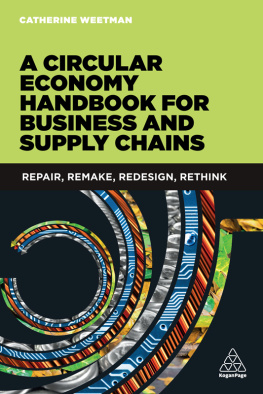
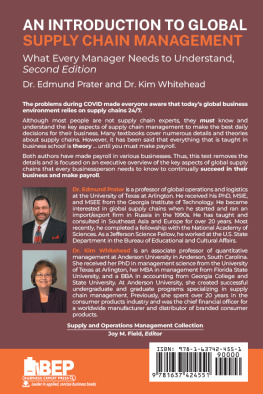
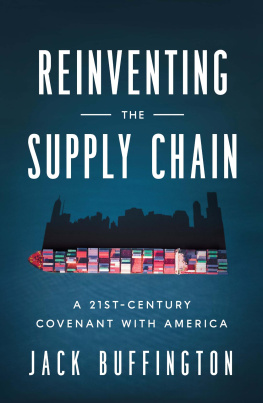

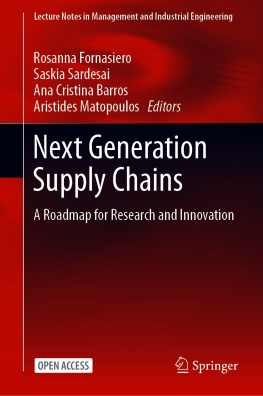
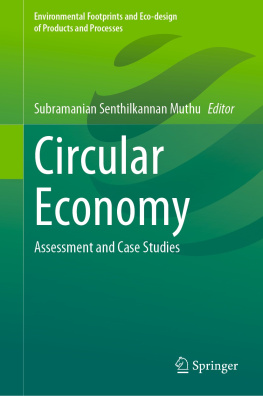
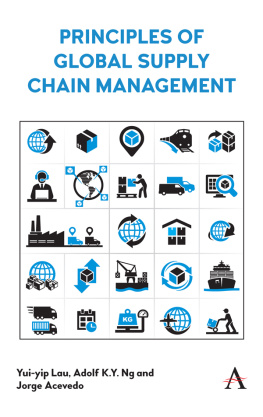


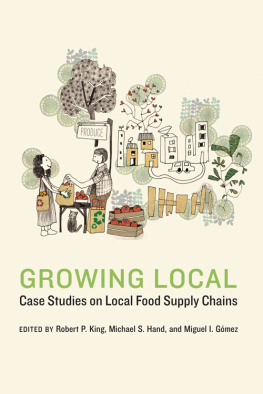
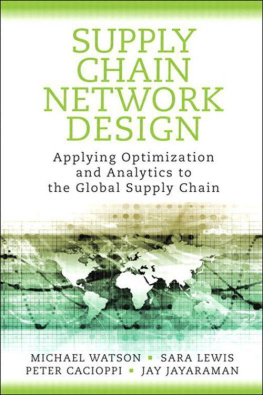
 Catherine Weetman founded Re-think Solutions to help businesses develop future-proofed resilient strategies, assessing sustainability risks and value opportunities. She gained an MSc in Logistics and Transportation from Cranfield University, is a Visiting Fellow at the University of Huddersfield and Vice-Chair of the Environment and Sustainability Forum, Chartered Institute of Logistics and Transport. Her background includes industrial engineering in manufacturing and retail distribution, logistics solution design, project management, business intelligence and supply chain consultancy. Her career covers food, fashion and supply chains, including Tesco, Kelloggs and DHL Supply Chain.
Catherine Weetman founded Re-think Solutions to help businesses develop future-proofed resilient strategies, assessing sustainability risks and value opportunities. She gained an MSc in Logistics and Transportation from Cranfield University, is a Visiting Fellow at the University of Huddersfield and Vice-Chair of the Environment and Sustainability Forum, Chartered Institute of Logistics and Transport. Her background includes industrial engineering in manufacturing and retail distribution, logistics solution design, project management, business intelligence and supply chain consultancy. Her career covers food, fashion and supply chains, including Tesco, Kelloggs and DHL Supply Chain.